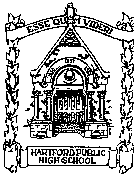
 |
|
|
| School Opens Amid Controversy | ||||||
|
Worn a bit at the edges, the block still yields a fairly sharp printed image. The design is a composite of views of the two buildings, razed in 1963, from various prospects. Designed by Helen Hazelton, the block was originally used to print a commemorative handkerchief. The handkerchief is referenced in Diane Fagan's book, Celebration and Remembrance: Commemorative Textiles in America,1790-1990.
|
|
Student scheduling problems were also in evidence again this year. Six weeks into the term, most schedules have been straightened out, but difficulties with the computer software used to carry out the scheduling function continue to plague the system.
Attendance was a little better in the first few days than it has been in recent years, at about 80 percent.
Diversity in the student body seems to be disappearing at H.P.H.S. Asian and Caucasian populations are minuscule and still shrinking, and it appears that some kids are crossing district lines to attend Bulkeley, which is more diverse racially and ethnically than Hartford High.
Students are as sanguine as ever. Most are accustomed to September chaos, and it is taken for granted that schedules will be incomplete for days or weeks after the opening of school.
I grew up in the North End on Seyms Street and attended the bilingual program at Barnard Brown School. I have a younger sister and brother. My mother was until recently a Welfare recipient, and my father works for Hartford Hospital in the dietary (kitchen) department. After Barnard Brown, I attended Quirk Middle, where I transitioned into the mainstream English program.
I got to HPHS in 1989. I became very active in the student council and other clubs at HPHS. I was an average B+ student, not an honor student (I actually failed my 1st year of Algebra!). While growing up, I had two lives: my academic life and my neighborhood life. To balance both took a strong foundation that began at home. My parents are great
Although, I didn’t know it then, I grew up in a segregated community made up of African-Americans and Latinos. My neighborhood was composed of buildings that were, for the most part, subsidized apartments. Having your father living at home was unusual. In my neighborhood, drugs and gang activity were so common that you learned to live with it.
People had networks and learned how to survive among the “mix,” legal or not. Economic conditions created safety nets for those who would be seen as thugs and gangsters by people outside the neighborhood. Inside the neighborhood they had names, their mothers were doing their best, and they became my childhood friends.
Today, I live in Boston. I come home about once a month to visit my (continued on Page Two) | ||||